Nokia Lumia 1020. Shock! A photo!
On July 11, 2013, at the Nokia Zoom Reinvented event in New York, we opened a new chapter in mobile photography - the Nokia Lumia 1020, the only smartphone with a 41-megapixel photo sensor and Windows Phone 8 as the operating system.
The covers are removed, all the technical characteristics are revealed, so let's look at the new smartphone in detail.
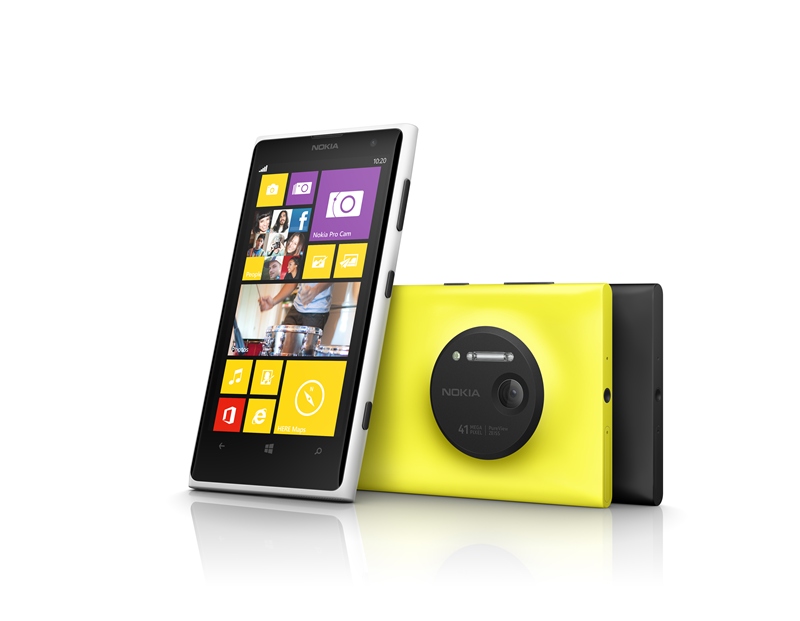
- Networks: GSM (850 MHz, 900 MHz, 1800 MHz, 1900 MHz), LTE (frequencies 1, 3, 7, 8, 20), WCDMA (900 MHz, 2100 MHz, 1900 MHz, 850 MHz);
- Camera: 41 megapixels (resolution 7712 x 5360), 1 / 1.5-inch PureView sensor, Carl Zeiss Tessar f / 2.2 lens, 26 mm focal length, autofocus, optical image stabilization, xenon flash;
- Front-facing camera: wide-angle, HD, 1.2 megapixels;
- Display: 4.5 inches, AMOLED with PureMotion HD + technology, WXGA (1280 x 768 pixels), 334 dpi, Corning Gorilla Glass 3;
- Processor: dual-core Qualcomm Snapdragon S4 with a clock frequency of 1.5 GHz;
- Memory: 2 GB of RAM, 32 (64) GB of internal memory + SkyDrive cloud storage up to 7 GB for free;
- Dimensions: 130.4 x 71.4 10.4 mm;
- Weight: 158 g;
- Connections and connectors: USB 2.0, Bluetooth 3.0, NFC, WLAN a / b / g / n, A-GPS and GLONASS, 3.5 mm audio jack;
- Battery: 2000 mAh;
- Audio: speaker, 2 microphones, HD voice compliant, 3.5 mm jack;
Starting a story about the new Nokia camera phone in this case will be better not from the traditional description of the case design and details about the technical stuffing of the device, but of course from the camera.

')
The Nokia Lumia 1020 uses a second-generation 41-megapixel photo sensor PureView, which combines the ability to take pictures in ultra-high (for mobile devices) resolution, as in the Nokia 808 PureView, and the ability to take pictures in low light conditions, as in Lumia 920 smartphones and the new Lumia 925 and 928. A backlit photosensor (BSI) has a large surface area — 1 / 1.5 inches — and about three to five times the size of many other modern sensors used in mobile devices.

Compared to the 808 PureView in the new Lumia 1020, the number of lenses used in the lens has increased from five to six. Together with our partner, the company ZEISS (until the recent rebranding - Carl Zeiss), we developed an optical system consisting of one glass and five high-quality plastic lenses. The Carl Zeiss Tessar lens has a fixed focal length of 26 mm and a maximum f / 2.2 aperture is one of the widest in camera phones.

Another key difference of the digital module in the smartphone Lumia 1020 is the optical image stabilization system (OIS). First applied in the Lumia 920, it appeared in the second interpretation in the new smartphone. Nokia engineers went non-standard by installing special bearings in the camera module, which make it possible to most effectively eliminate any negative effects from the user's involuntary movements during the shooting process. As the journalists noticed, who managed to make a quick test of the Lumia 1020 at a presentation in New York, the work of the bearings can be heard by leaning the Nokia to the ear in relative silence.
If we talk about the engineering concept of the new camera phone as a whole, then the main principle that our specialists adhered to in developing the device was to obtain the highest quality and detailed images regardless of the external shooting conditions while maintaining the sharpness balance and ultra-low noise level. And to achieve this goal, the Nokia Lumia 1020 not only used the aforementioned OIS, six-lens and 41-megapixel photosensor, but also advanced computational algorithms, advanced software and a hybrid flashlight, combining LED and xenon light emitters. By the way, the use of a xenon flash is not only and not so much a tribute to traditions, as a solution to improve shooting in the dark: such a flash can illuminate the scene in 1/16 000 seconds, allowing you to make a high-quality night shot with a minimum shutter speed.
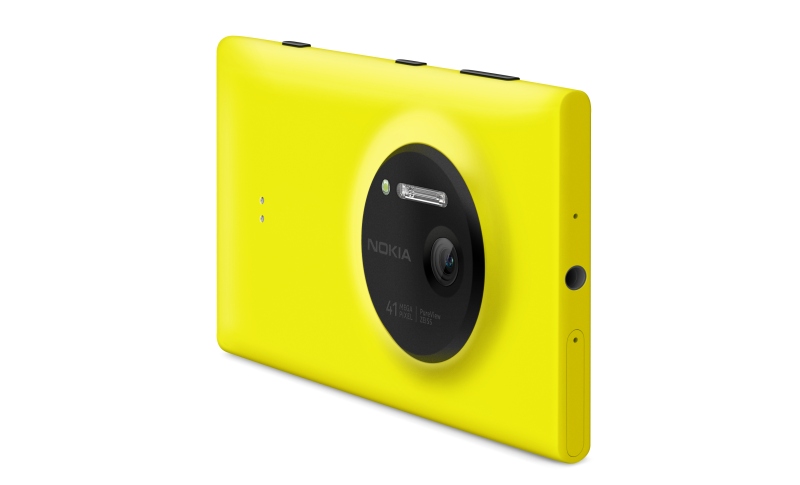
But back to the main feature of the Lumia 1020. PureView 41-megapixel photosensor can process images with a maximum resolution of 34 megapixels with an aspect ratio of 16: 9 or 38 megapixels - with a classic 4: 3 ratio. In addition to the picture with the maximum resolution, when activating the “Dual Shot” mode, the Lumia 1020 can use the method of oversampling in parallel to create a picture in the resolution of 5 megapixels. Just as it was implemented in the Nokia 808, the PureView algorithm combines up to seven neighboring pixels into one “superpixel”, producing at the output a snapshot that is distinguished by the best color rendition, sharpness and lack of noise.

Test shot with a conventional camera (left) and a Lumia 1020 camera (right).
The difference in quality is visible when comparing the "compressed" snapshot of the Lumia 1020 with a snapshot of the usual 5-megapixel camera. The fact is that the true resolution of the photosensor is often lower than that stated by the manufacturer. That is, cameras with a resolution of 5 megapixels may not capture a resolution of five million pixels. It depends primarily on the design of the optics and the peculiarities of working with Bayer filters. For example, in most traditional 5 megapixel photosensors, there are only 2.5 million pixels in green and 1.25 million pixels in red and blue each. The images obtained by the oversampling method in the Lumia 1020, due to the initially better image capture conditions and the correctly configured PureView algorithm, are free from blurriness, artifacts and other shortcomings of the traditional photosensor.
From technological processes to practice:
Nokia Lumia 1020 opens up new possibilities for mobile photo-creativity: the framing and rescaling functions allow you to adjust and create all sorts of variations of a single image without any loss of quality, ranging from straightening the littered horizon and ending with the breakdown of a group frame into individual portrait shots. As in the case of the “Double Shot” mode, the oversampling technology allows you to crop the required fragment with a maximum threefold magnification and convert it into a 5-megapixel image while maintaining high quality.
In addition, the PureView algorithm is used for digital zooming when taking photos and videos, allowing you to achieve threefold magnification when shooting 6-megapixel images, fourfold magnification when recording Full HD video and sixfold - when recording at 720 p. And all this - without the use of massive retractable zoom lenses. In this case, the Nokia Lumia 1020 allows you to maintain a constant f2.2 aperture value throughout the entire zoom range, which is quite rare even in the world of professional SLR cameras.
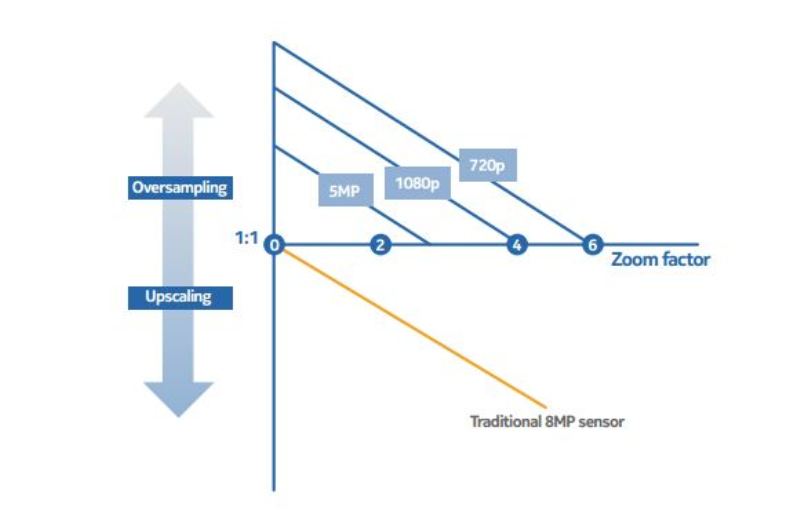
The installation of various parameters and shooting modes, as well as the subsequent adjustment and correction of the image is performed using the proprietary Nokia Pro Camera application. It defaults to the interface of the camera Lumia 1020, replacing the standard in Windows Phone. Thanks to the shooting settings selector in the form of dynamic semicircles, the application allows you to set the necessary exposure, white balance, shutter speed and sensitivity (ISO) as quickly as possible and even before pressing the shutter button (and this button is specifically displayed on the front part of the body) to assess how any change. Convenient solution for a novice photographer (which also provides integrated guidance), and for the professional who wants to experiment.
Separately, it should be said about shooting video. As mentioned above, the camera of the smartphone can record video in two possible resolutions: 1920x1080 (Full HD) or 1280x720 and supports three different recording speeds: 24, 25 and 30 frames per second. To record high-quality sound, the smartphone provides Nokia Rich Recording technology. Thanks to specially designed stereo microphones and Audio Bass Filter low-pass filtering technology, Nokia Rich Recording technology provides the purest sound recording up to 140 dB. Now video from rock concerts and night discos will no longer wheeze and fade.
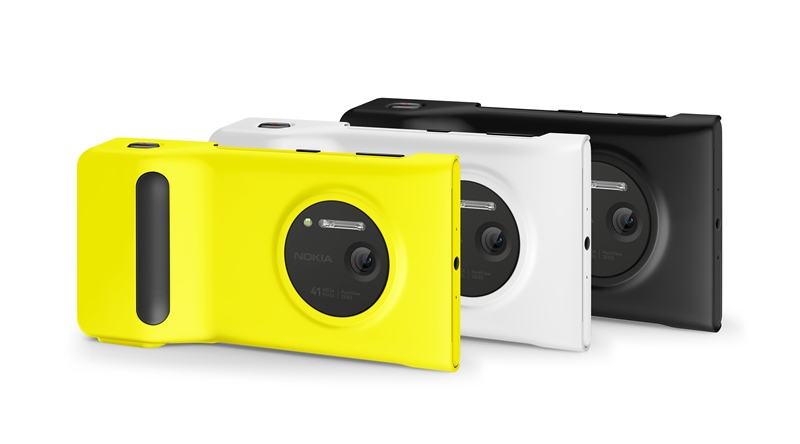
Nokia Lumia 1020 is made in the already classic design of the flagship device Lumia, however, due to the presence of a 41-megapixel camera, it has its own characteristics. For example, the area of the camera is made in the form of a protruding circular disc and deliberately emphasized by a contrasting insert of black plastic. As always, the design of the device is distinguished by well-designed elements and, as we believe, will attract views.

The color scheme was designed for different consumer preferences: for lovers of the classics, the Nokia Lumia 1020 is offered in an elegant black and a more noticeable white color, and for fans of bright color combinations, a contrasting yellow body is provided.
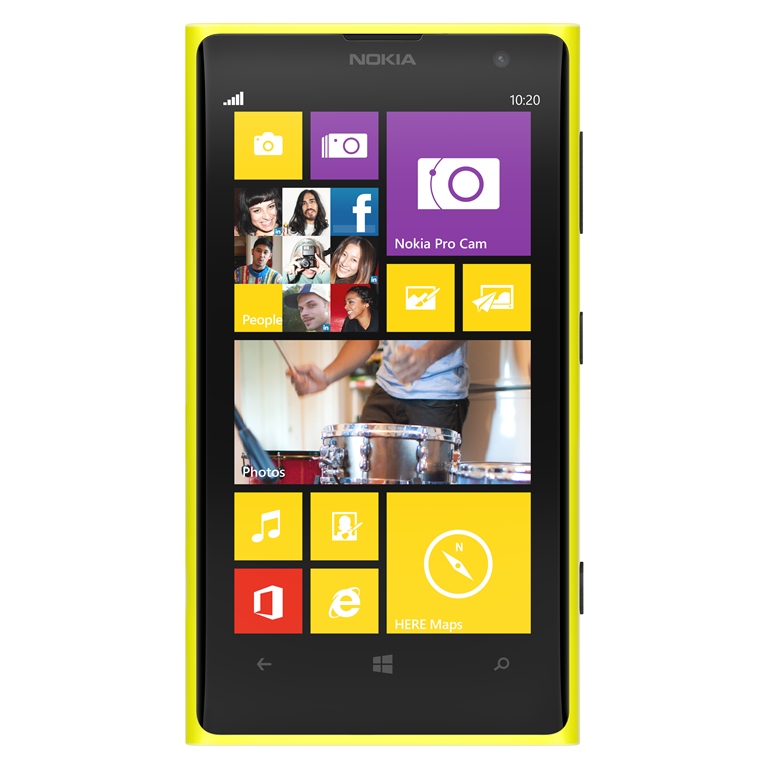
The smartphone is equipped with a bright laminated AMOLED-display with a diagonal of 4.5 inches, a resolution of 1280x768 pixels and a density of 334 dots per inch. Protects the display One of the latest developments of the company Corning - impact-resistant glass Gorilla Glass 3.
If at the dawn of camera phones, these devices could be compared in thickness with the Zenit camera (without taking into account the lens, of course), then today the new Lumia 1020 fully corresponds to the “non-photo-oriented” classmates for this parameter. The thickness of the device is only 10.4 mm, and this is in its widest part - a special volume, in which all the elements of the camera are most compactly arranged: a lens, a photosensor and a double flash.

The body of the smartphone traditionally consists of two parts: a monolithic base, which serves as a stiffener for the entire smartphone, and a back cover, which reliably protects the internal components from dust and dirt. Both the monolithic base and the back cover are made of polycarbonate with a matte finish - stylish and not branded, and therefore more comfortable in everyday use.
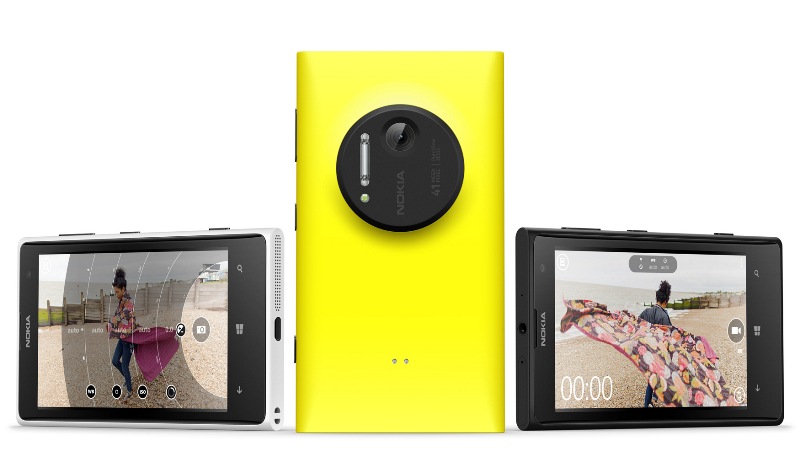
The Nokia Lumia 1020 is powered by a Qualcomm S4 1.5 GHz dual-core processor, as well as the previous flagship devices Lumia 920 and Lumia 925. The smartphone has 2 GB of RAM and 32 GB of internal memory for storing high-resolution images and other content. The smartphone supports all modern interfaces, including USB 2.0, Bluetooth 3.0, NFC, Wi-Fi 802.11n, A-GPS and GLONASS.
At the Nokia Zoom Reinvented event, we also presented a number of accessories that you might find interesting. For example, Nokia Camera Grip is a special case that provides a more convenient and familiar “camera” grip and control functions when shooting objects, as well as an additional battery with a capacity of 1020 mAh. The set of Nokia Camera Grip is also present tripod.
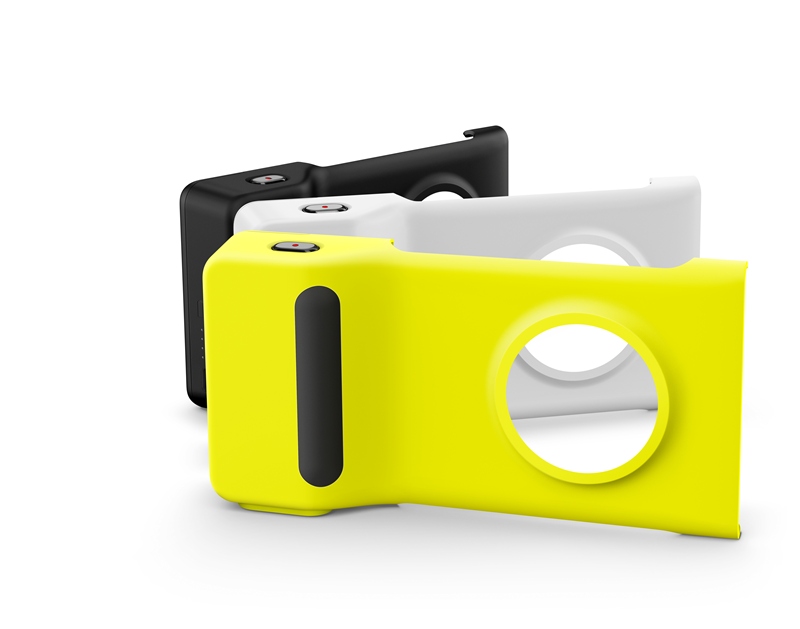
In addition, we presented a special cover for wireless charging Lumia 1020, as well as an accelerated charging adapter.
PS Some photos taken by the Nokia 1020, at the click of highres:


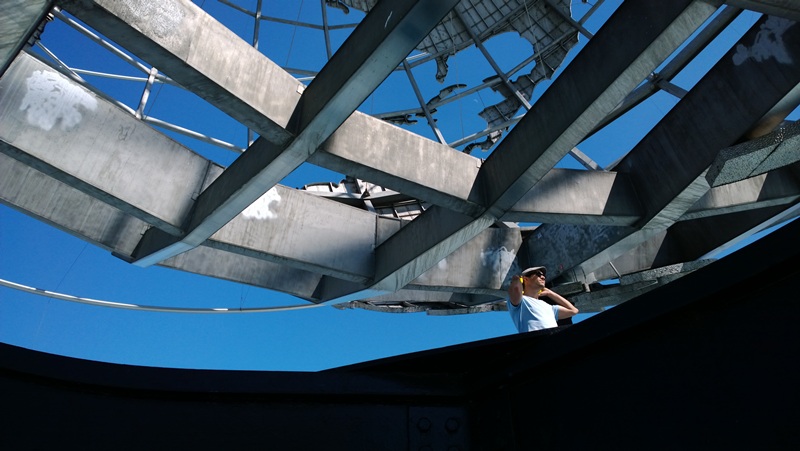



The covers are removed, all the technical characteristics are revealed, so let's look at the new smartphone in detail.

Specifications
- Networks: GSM (850 MHz, 900 MHz, 1800 MHz, 1900 MHz), LTE (frequencies 1, 3, 7, 8, 20), WCDMA (900 MHz, 2100 MHz, 1900 MHz, 850 MHz);
- Camera: 41 megapixels (resolution 7712 x 5360), 1 / 1.5-inch PureView sensor, Carl Zeiss Tessar f / 2.2 lens, 26 mm focal length, autofocus, optical image stabilization, xenon flash;
- Front-facing camera: wide-angle, HD, 1.2 megapixels;
- Display: 4.5 inches, AMOLED with PureMotion HD + technology, WXGA (1280 x 768 pixels), 334 dpi, Corning Gorilla Glass 3;
- Processor: dual-core Qualcomm Snapdragon S4 with a clock frequency of 1.5 GHz;
- Memory: 2 GB of RAM, 32 (64) GB of internal memory + SkyDrive cloud storage up to 7 GB for free;
- Dimensions: 130.4 x 71.4 10.4 mm;
- Weight: 158 g;
- Connections and connectors: USB 2.0, Bluetooth 3.0, NFC, WLAN a / b / g / n, A-GPS and GLONASS, 3.5 mm audio jack;
- Battery: 2000 mAh;
- Audio: speaker, 2 microphones, HD voice compliant, 3.5 mm jack;
Camera
Starting a story about the new Nokia camera phone in this case will be better not from the traditional description of the case design and details about the technical stuffing of the device, but of course from the camera.

')
The Nokia Lumia 1020 uses a second-generation 41-megapixel photo sensor PureView, which combines the ability to take pictures in ultra-high (for mobile devices) resolution, as in the Nokia 808 PureView, and the ability to take pictures in low light conditions, as in Lumia 920 smartphones and the new Lumia 925 and 928. A backlit photosensor (BSI) has a large surface area — 1 / 1.5 inches — and about three to five times the size of many other modern sensors used in mobile devices.

Compared to the 808 PureView in the new Lumia 1020, the number of lenses used in the lens has increased from five to six. Together with our partner, the company ZEISS (until the recent rebranding - Carl Zeiss), we developed an optical system consisting of one glass and five high-quality plastic lenses. The Carl Zeiss Tessar lens has a fixed focal length of 26 mm and a maximum f / 2.2 aperture is one of the widest in camera phones.

Another key difference of the digital module in the smartphone Lumia 1020 is the optical image stabilization system (OIS). First applied in the Lumia 920, it appeared in the second interpretation in the new smartphone. Nokia engineers went non-standard by installing special bearings in the camera module, which make it possible to most effectively eliminate any negative effects from the user's involuntary movements during the shooting process. As the journalists noticed, who managed to make a quick test of the Lumia 1020 at a presentation in New York, the work of the bearings can be heard by leaning the Nokia to the ear in relative silence.
If we talk about the engineering concept of the new camera phone as a whole, then the main principle that our specialists adhered to in developing the device was to obtain the highest quality and detailed images regardless of the external shooting conditions while maintaining the sharpness balance and ultra-low noise level. And to achieve this goal, the Nokia Lumia 1020 not only used the aforementioned OIS, six-lens and 41-megapixel photosensor, but also advanced computational algorithms, advanced software and a hybrid flashlight, combining LED and xenon light emitters. By the way, the use of a xenon flash is not only and not so much a tribute to traditions, as a solution to improve shooting in the dark: such a flash can illuminate the scene in 1/16 000 seconds, allowing you to make a high-quality night shot with a minimum shutter speed.

But back to the main feature of the Lumia 1020. PureView 41-megapixel photosensor can process images with a maximum resolution of 34 megapixels with an aspect ratio of 16: 9 or 38 megapixels - with a classic 4: 3 ratio. In addition to the picture with the maximum resolution, when activating the “Dual Shot” mode, the Lumia 1020 can use the method of oversampling in parallel to create a picture in the resolution of 5 megapixels. Just as it was implemented in the Nokia 808, the PureView algorithm combines up to seven neighboring pixels into one “superpixel”, producing at the output a snapshot that is distinguished by the best color rendition, sharpness and lack of noise.

Test shot with a conventional camera (left) and a Lumia 1020 camera (right).
The difference in quality is visible when comparing the "compressed" snapshot of the Lumia 1020 with a snapshot of the usual 5-megapixel camera. The fact is that the true resolution of the photosensor is often lower than that stated by the manufacturer. That is, cameras with a resolution of 5 megapixels may not capture a resolution of five million pixels. It depends primarily on the design of the optics and the peculiarities of working with Bayer filters. For example, in most traditional 5 megapixel photosensors, there are only 2.5 million pixels in green and 1.25 million pixels in red and blue each. The images obtained by the oversampling method in the Lumia 1020, due to the initially better image capture conditions and the correctly configured PureView algorithm, are free from blurriness, artifacts and other shortcomings of the traditional photosensor.
From technological processes to practice:
Nokia Lumia 1020 opens up new possibilities for mobile photo-creativity: the framing and rescaling functions allow you to adjust and create all sorts of variations of a single image without any loss of quality, ranging from straightening the littered horizon and ending with the breakdown of a group frame into individual portrait shots. As in the case of the “Double Shot” mode, the oversampling technology allows you to crop the required fragment with a maximum threefold magnification and convert it into a 5-megapixel image while maintaining high quality.
In addition, the PureView algorithm is used for digital zooming when taking photos and videos, allowing you to achieve threefold magnification when shooting 6-megapixel images, fourfold magnification when recording Full HD video and sixfold - when recording at 720 p. And all this - without the use of massive retractable zoom lenses. In this case, the Nokia Lumia 1020 allows you to maintain a constant f2.2 aperture value throughout the entire zoom range, which is quite rare even in the world of professional SLR cameras.

The installation of various parameters and shooting modes, as well as the subsequent adjustment and correction of the image is performed using the proprietary Nokia Pro Camera application. It defaults to the interface of the camera Lumia 1020, replacing the standard in Windows Phone. Thanks to the shooting settings selector in the form of dynamic semicircles, the application allows you to set the necessary exposure, white balance, shutter speed and sensitivity (ISO) as quickly as possible and even before pressing the shutter button (and this button is specifically displayed on the front part of the body) to assess how any change. Convenient solution for a novice photographer (which also provides integrated guidance), and for the professional who wants to experiment.
Separately, it should be said about shooting video. As mentioned above, the camera of the smartphone can record video in two possible resolutions: 1920x1080 (Full HD) or 1280x720 and supports three different recording speeds: 24, 25 and 30 frames per second. To record high-quality sound, the smartphone provides Nokia Rich Recording technology. Thanks to specially designed stereo microphones and Audio Bass Filter low-pass filtering technology, Nokia Rich Recording technology provides the purest sound recording up to 140 dB. Now video from rock concerts and night discos will no longer wheeze and fade.
Design, screen

Nokia Lumia 1020 is made in the already classic design of the flagship device Lumia, however, due to the presence of a 41-megapixel camera, it has its own characteristics. For example, the area of the camera is made in the form of a protruding circular disc and deliberately emphasized by a contrasting insert of black plastic. As always, the design of the device is distinguished by well-designed elements and, as we believe, will attract views.

The color scheme was designed for different consumer preferences: for lovers of the classics, the Nokia Lumia 1020 is offered in an elegant black and a more noticeable white color, and for fans of bright color combinations, a contrasting yellow body is provided.

The smartphone is equipped with a bright laminated AMOLED-display with a diagonal of 4.5 inches, a resolution of 1280x768 pixels and a density of 334 dots per inch. Protects the display One of the latest developments of the company Corning - impact-resistant glass Gorilla Glass 3.
Housing
If at the dawn of camera phones, these devices could be compared in thickness with the Zenit camera (without taking into account the lens, of course), then today the new Lumia 1020 fully corresponds to the “non-photo-oriented” classmates for this parameter. The thickness of the device is only 10.4 mm, and this is in its widest part - a special volume, in which all the elements of the camera are most compactly arranged: a lens, a photosensor and a double flash.

The body of the smartphone traditionally consists of two parts: a monolithic base, which serves as a stiffener for the entire smartphone, and a back cover, which reliably protects the internal components from dust and dirt. Both the monolithic base and the back cover are made of polycarbonate with a matte finish - stylish and not branded, and therefore more comfortable in everyday use.

Technical features
The Nokia Lumia 1020 is powered by a Qualcomm S4 1.5 GHz dual-core processor, as well as the previous flagship devices Lumia 920 and Lumia 925. The smartphone has 2 GB of RAM and 32 GB of internal memory for storing high-resolution images and other content. The smartphone supports all modern interfaces, including USB 2.0, Bluetooth 3.0, NFC, Wi-Fi 802.11n, A-GPS and GLONASS.
Accessories
At the Nokia Zoom Reinvented event, we also presented a number of accessories that you might find interesting. For example, Nokia Camera Grip is a special case that provides a more convenient and familiar “camera” grip and control functions when shooting objects, as well as an additional battery with a capacity of 1020 mAh. The set of Nokia Camera Grip is also present tripod.

In addition, we presented a special cover for wireless charging Lumia 1020, as well as an accelerated charging adapter.
PS Some photos taken by the Nokia 1020, at the click of highres:






Source: https://habr.com/ru/post/186926/
All Articles